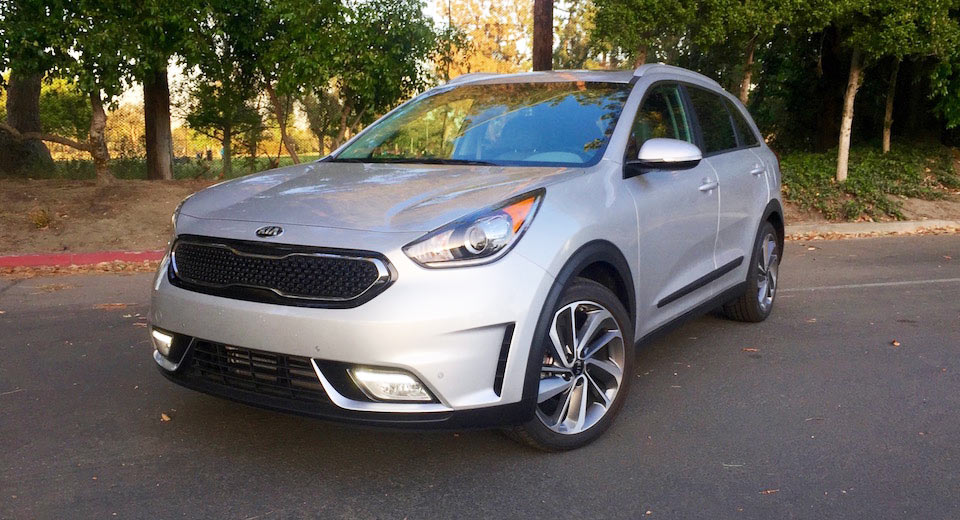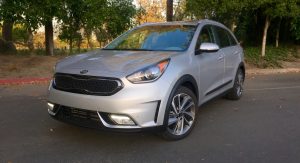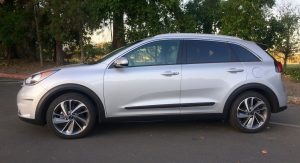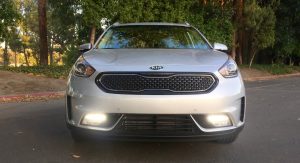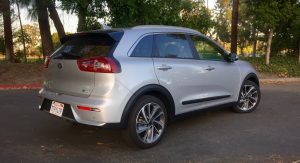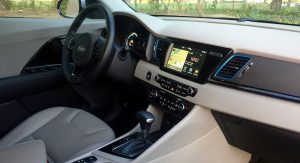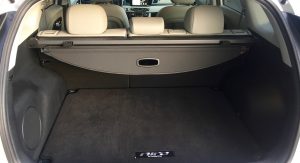Despite not being its maker’s first hybrid, the Kia Niro has the task of being the one that gets it right.
Kia, and its parent and collaborator Hyundai, aren’t a byword for electrification despite being in the game for the better part of a decade with a pair of hybridized family sedans, the Optima and Sonata, respectively.
And yet the Korean brands make no secret of exploring alternative propulsion and setting sights on the hybrid leader, Toyota.
The Kia Niro, therefore, is one car with the unenviable task of convincing the world it can out-hybrid the hybrid that made hybrids a thing. Yet it isn’t about to shout or complain about it. Instead, it tries to seduce with logic.

Crossed lines
Kia would like to think the Niro is some kind of answer to the subcompact crossover boom it has only partially answered so far with the funky Soul. The Niro, while larger and more contemporary looking, is no more than a tall Forte wagon.
It’s based on the same platform as the Hyundai Ioniq, a compact platform the two share for their electrified vehicles right now. But 171.5 inches (4,356.1 mm) long, it’s smack in the Honda HR-V and Mini Countryman territory.
Even though the doors themselves feel tall, the Niro isn’t perched as high off the ground as even some of the lowest SUVs, something I realized when I somehow managed to smack my head into the tailgate latch the first day I had it.
Before I did that, the Niro seemed clean, but fairly anonymous in the way it looks. It might actually be trying too hard to be normal, especially painted in the Silky Silver paint like my test car. If anything, it looks like a slightly squished version of Kia’s own Sportage compact SUV, which isn’t a bad thing if you find the Sportage too weird in front.
But a crossover? I don’t see it, even after being hit on the head.
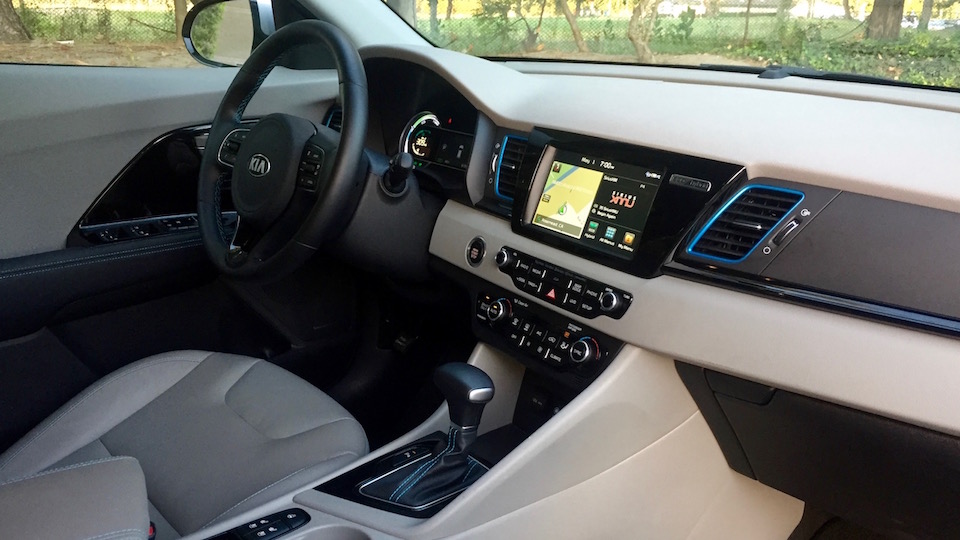
Efficiency you can see, too
The normalcy extends to the interior, and that’s welcomed. Recent Kia interiors have been incredibly logical and the Niro is no exception. If there’s a place where it isn’t trying to be a Toyota Prius, it’s here.
The top Touring model is packed with toys in the grand Kia tradition, with navigation, Apple CarPlay, heated steering wheel, heated and cooled front seats and power folding outside mirrors, just to name a few items. It’s impressive for around $30,000, impressive, frankly, for just about any small/tall wagon/crossover.
It’s also functional. The cupholders actually hold cups or bottles or other odds and ends. There’s a USB port in an actually logical place. The gauges are clear and don’t force efficiency information in your face if that’s not your thing. Also, the infotainment system lets you use Apple CarPlay while still being able to use the built-in navigation system, which is leagues more user-friendly than Apple’s Maps. Seriously, it’s all about the little things.
But the Niro’s budget origins are in plain sight. A vast swath of thin plastic on the dashboard practically stares back at the passenger. The leather upholstery feels more serviceable than luxurious. Safety-conscious customers might also rather trade one of those heated or cooled items for the automatic emergency braking or adaptive cruise control that are part of the $1,900 Advanced Technology Package, too.
Space in front is fine, and the Niro doesn’t feel as narrow as a Chevrolet Trax or Buick Encore, for example. The rear seat is also fine, but legroom is nothing particularly special. At least the cargo space is uninterrupted by battery
Does a large, flat cargo area finally make the Niro a crossover?
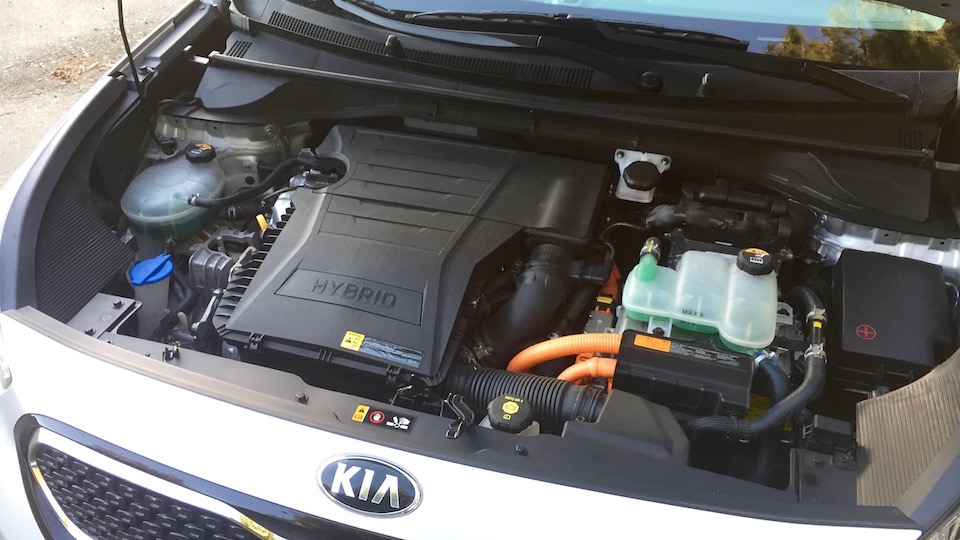
Expected returns
Where the front-drive-only Niro is Prius-like is in the way it drives and sips fuel, however.
A 1.6-liter four with 103 horsepower is mated to an electric motor with 43 horsepower for a combined output of 146 horsepower – hardly the makings of a barnstormer. The performance and styling are equally breathtaking.
Fortunately, Kia eschews a CVT in its hybrids, so the Niro’s six-speed dual-clutch transmission rarely forces wailing or groans from the engine, making the driving experience far more pleasant than even some gas-only SUVs I’ve driven lately. It’s not the smoothest DCT out there, and placing the gear selector in Reverse or Drive always seemed to evoke hesitation before the car moved as expected.
But ultimately, the Niro lets you forget it’s a hybrid pretty easily. There’s a hint of low-speed shuddering when the gasoline engine kicks on, but it’s still smoother than many start/stop systems in, say, a BMW Group product. The ride is comfortable and it’s as quiet as a relatively inexpensive box can be at highway speeds.
And then there’s the fuel economy. With ratings of 51 mpg highway and 46 mpg highway according to the EPA, it doesn’t trounce the Prius, but it’s close enough. Low-to-mid 40s was easy to do in city driving, while a long highway run and not driving particularly efficiently netted close to 50.
Park and walk out of it, however, and the Niro is far from memorable to drive. That’s kind of the point, though.

Low on emissions and emotions
At $30,545, the Niro lives about where a similarly equipped Mazda CX-3 or Trax might, as well as a nearly loaded Prius. The fact it starts as low as $23,785, including destination, is especially attractive when you consider that’s in the ballpark of moderately equipped compact cars these days.
Unexciting, it asks very little in return for its practicality and efficiency. Its space and ease of use ooze common sense. Its fuel economy is excellent. You very probably don’t need all-wheel drive anyway, so subcompact crossover shoppers would do a disservice to not even consider the Niro. The only significant hesitation is its lack of personality.
The Kia Niro is hardly love at first sight. Yet its numerous positive characteristics grow on you over time. It may not be a passionate romance, but it’s set up for a long-lasting one.
Photos: Zac Estrada/Carscoops







